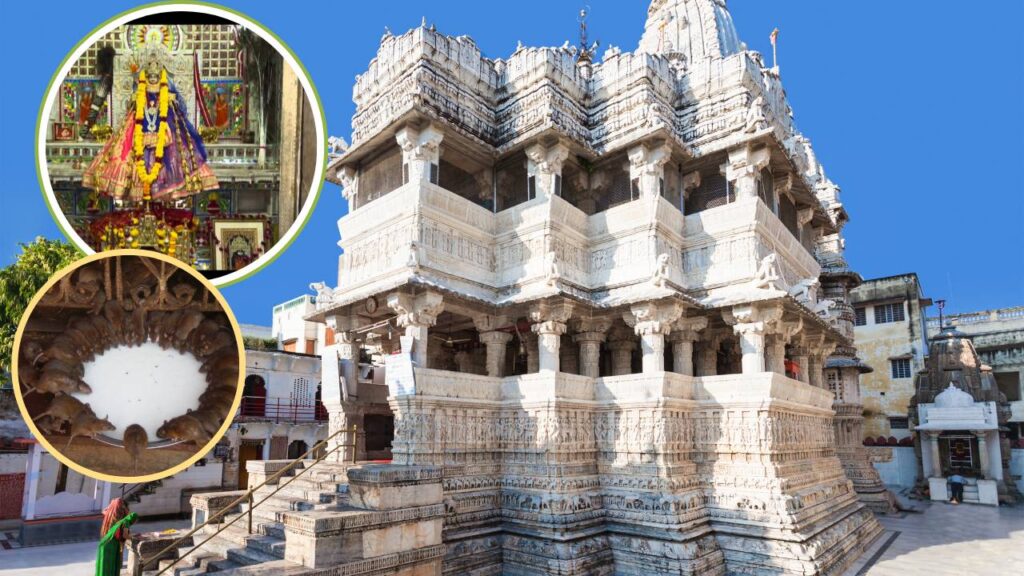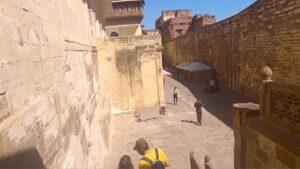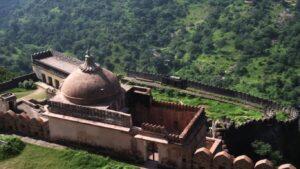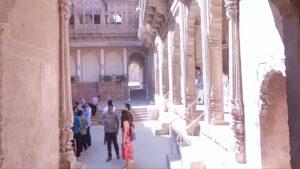When it comes to temples, India is a land of spiritual surprises. But nothing quite prepares visitors for what they’ll find in Deshnok, Rajasthan—a place where rats are not only welcome but worshipped. Officially known as Karni Mata Temple, the site has earned global fame as the Temple of the Rats in India. Home to over 25,000 rats, this temple challenges the boundaries between devotion, mythology, and the bizarre.
Journey through the location, legends, rituals, and hidden facts that make this temple one of the most mysterious places in the world.
Location of the Temple of the Rats in India
The Karni Mata Temple is located in the town of Deshnok, which lies approximately 30 kilometers south of Bikaner, in Rajasthan, India. The temple is situated along the highway that connects Bikaner to Jodhpur, making it easily accessible by road and rail.
- Nearest railway station: Bikaner Junction
- Nearest airport: Jodhpur Airport (250 km approx.)
Despite its remote desert surroundings, the temple attracts thousands of domestic pilgrims and international tourists each year, including travelers from the USA, UK, and Canada who are fascinated by this holy sanctuary of rats.
Temple Opening Hours
The Temple of the Rats in India is open daily and follows a traditional Hindu temple schedule:
- Opening Time: 4:00 AM
- Closing Time: 10:00 PM
- Best Time to Visit: Early morning (less crowded) or evening during aarti ceremonies
There are no entry fees, and all visitors are welcome regardless of nationality, caste, or religion. It’s important to respect temple customs, as it remains an active site of worship for many locals.
Story of Karni Mata – The Goddess Behind the Temple
To truly grasp the significance of this temple, one must understand the story of Karni Mata, the divine figure in whose honor it was built. Karni Mata was a mystic Hindu sage born in the 14th century and revered by the Charan community as an incarnation of Goddess Durga.
Legend Behind the Rats
According to popular legend, Karni Mata once pleaded with Yama, the God of Death, to restore the life of her dead stepson. Yama refused. In protest, Karni Mata declared that from her lineage forward, no soul would fall into Yama’s hands. Instead, all of her followers would be reincarnated as rats, and later reborn as humans in a never-ending cycle.
This story laid the foundation for rat worship at the temple. Devotees believe that the rats are holy carriers of divine souls, not pests.
Why Are Rats Worshipped in the Temple?
The core of this temple’s belief system is that the rats, referred to as “kabbas,” are reincarnated souls of Karni Mata’s devotees. Therefore, they are not only respected but protected, worshipped, and celebrated.
These rats live freely within the temple premises. They climb the walls, scurry along the marble floors, and sometimes even rest on the laps or shoulders of visitors. Killing or harming a rat here is a mortal sin, and the only atonement is to donate a life-size silver or gold rat statue, which becomes part of the temple’s treasure.
This unusual relationship between humans and rodents is rooted in deep spiritual symbolism, emphasizing the cycle of life, death, and divine rebirth.
Key Rituals Performed at the Temple
The daily rituals and spiritual practices at the Temple of the Rats are unlike anything seen in other temples in India. Here’s what you’ll witness:
1. Mangla Aarti (4:30 AM to 6:00 AM)
This early morning ritual is the first aarti of the day. Priests bathe the idol of Karni Mata and offer milk, sweets, and flowers to her and the rats. Many locals attend this to begin their day with divine blessings.
2. Feeding the Rats (Throughout the Day)
One of the most important rituals is feeding the rats, done by both priests and devotees. Bowls of milk, water, coconut, jaggery, and grains are placed around the temple. The rats gather in hundreds to eat freely.
Devotees consider it auspicious to eat food nibbled by the rats. They believe it brings blessings and protection from misfortune. It’s common to see people sharing prasad with the rats and then eating what’s left.
3. Bhog Ritual (Mid-morning)
The temple priests offer cooked meals (bhog) to the deity and rats. During this time, loud chants and drum beats fill the temple as the offerings are made in a ceremonial manner.
4. Evening Aarti (7:00 PM – 8:30 PM)
The evening rituals are accompanied by chanting of hymns, lighting of oil lamps, and special offerings. This is also when the temple is beautifully lit, and the white rats are more frequently sighted—an event believed to be a divine appearance.
Architecture and Design of the Temple
Though primarily known for its sacred rats, the Karni Mata Temple in Deshnok, Rajasthan, is also a stunning example of early 20th-century Indian temple architecture. Built in 1900 by Maharaja Ganga Singh of Bikaner, the temple stands as a symbol of devotion and royal craftsmanship. It reflects a harmonious blend of Rajput and Mughal architectural influences, with intricate carvings, symbolic motifs, and spiritual aesthetics embedded throughout the structure.
Key Architectural Features:
1. Marble Floors and Latticework
The temple’s floors are crafted from polished white marble, imported from Makrana—the same region that supplied marble for the Taj Mahal. These cool, gleaming surfaces remain spotless despite the presence of thousands of rats. The walls and windows feature delicate latticework (jaali design), allowing natural light to create mesmerizing patterns inside the temple. This jaali also provides ventilation, maintaining a balanced temperature in the desert heat.
2. Ornate Sanctum Housing Karni Mata’s Idol
At the heart of the temple lies the garbha griha (sanctum sanctorum), which houses the idol of Karni Mata, believed to be an incarnation of the warrior goddess Durga. The idol is beautifully adorned with a silver crown, garlands, and red drapery. The sanctum is decorated with silver panels and gold-threaded textiles, reflecting devotion and opulence. Devotees gather here for darshan, often bringing offerings of milk and grains for the rats.
3. Decorative Domes and Mughal-Style Entrance
The temple’s grand entrance is designed in Mughal style, with a towering arched gateway flanked by miniature domes and floral carvings. The doorways are covered with heavy silver doors, engraved with scenes from Hindu mythology, donated by the Maharaja himself. The temple’s roofline features Rajasthani chhatris (elevated domed pavilions) that add to its majestic skyline, while the blend of domes and spires creates a harmonious fusion of Hindu and Islamic aesthetics.
4. Courtyard with Rat Feeding Zones
The temple has an open courtyard where devotees often sit and feed the revered rats, known as kabbas. Specially designed feeding bowls and troughs are scattered around, filled with milk, sweets, and grains. There are also dedicated areas with food platforms to prevent contamination and keep the feeding organized. It’s considered a blessing if a rat eats from your hand—or runs over your feet.
Mystical Significance of White Rats
Among the thousands of black and brown rats in the temple, white rats are extremely rare and hold special spiritual significance. They are believed to be the incarnations of Karni Mata herself and her sons.
If you are fortunate enough to see a white rat, it’s considered a once-in-a-lifetime blessing. Locals may even guide you to their hiding spots, hoping you’ll receive divine grace during your visit.
Many visitors believe that spotting a white rat signals good fortune, marriage, fertility, health, or spiritual progress.
Mind-Blowing Facts of Temple of the Rats in India
Here are some jaw-dropping facts about the Temple of the Rats in India that make it even more fascinating:
1. No Major Disease Outbreak Has Ever Been Reported
Despite being home to over 25,000 rats that roam freely and interact closely with humans, the Temple of the Rats in India has never reported a single major disease outbreak. This includes illnesses typically associated with rodents, such as the bubonic plague, salmonella, or leptospirosis.
What makes this even more astonishing is the high volume of foot traffic, the shared food offerings, and the lack of modern sanitation practices. Scientists and medical researchers have conducted multiple investigations, but no concrete explanation has been found. Many believe that divine protection from Karni Mata keeps both the rats and devotees safe—reinforcing the faith that the temple is indeed spiritually blessed and supernaturally protected.
2. Temple Celebrates the Rats’ Birth and Death Annually
Rats at the temple are not just sacred—they’re celebrated. During Karni Mata’s annual festival and birthday, which usually falls during Navratri, the temple hosts elaborate celebrations in honor of the rats.
Huge quantities of laddu (sweet), jaggery, grains, milk, and dry fruits are specially prepared and offered to the rats, while the temple is decorated with flowers, lights, and spiritual flags. Folk singers and local priests perform devotional songs that describe the divine status of Karni Mata and her “children”—the rats.
The occasion is not just a feast, but a cultural and religious celebration of life and rebirth, where even the rats’ life cycles are acknowledged as divine events worthy of festival-scale devotion.
3. Temple Has Its Own Rat Guards
The safety and well-being of the rats are taken so seriously that the temple employs full-time rat caretakers or guards. These individuals are not temple priests, but specially trained staff whose sole responsibility is to:
- Monitor rat behavior
- Ensure the rats are fed regularly
- Maintain cleanliness in feeding zones
- Guide visitors away from stepping on rats
- Quickly remove trash or food that could harm them
They also track any rat injury or death—and if a rat dies by accident, it’s logged, and compensation (usually in the form of a silver rat statue) is requested from the responsible party. These rat guards are seen as protectors of reincarnated souls, and their work is respected within the temple hierarchy.
4. You Can Stay in Nearby Dharamshalas
If you’re planning a pilgrimage or extended visit, you don’t have to worry about accommodation. The temple is surrounded by several dharamshalas—basic, affordable spiritual lodges offering clean bedding, shared bathrooms, and simple vegetarian meals.
These lodges cater mostly to devotees and spiritual travelers who want to attend both the early morning Mangla Aarti and the evening prayer rituals. Some even offer guided spiritual tours of the temple, sharing lesser-known stories, myths, and customs passed down through generations.
Staying overnight gives visitors a chance to fully immerse themselves in the temple culture, engage with locals, and witness the temple’s atmosphere change from day to night—a spiritually rich experience that goes beyond a casual day visit.
FAQs
What is the Temple of the Rats in India?
The Temple of the Rats in India refers to the Karni Mata Temple, located in Deshnok, Rajasthan, where over 25,000 rats are worshipped as divine reincarnations of Karni Mata’s devotees. It’s one of the most unusual religious sites in the world.
2. Why are rats worshipped in the temple?
Rats are considered sacred beings in the temple because of a legend involving Karni Mata, a 14th-century mystic. She declared that her followers would never face death but instead reincarnate as rats and later return as humans, creating a divine cycle of rebirth
3. Is it safe to visit the Temple of the Rats?
Yes, it is surprisingly safe. Despite thousands of rats roaming freely, no major disease outbreak has ever been reported from the temple. Basic hygiene precautions like using hand sanitizer after your visit are recommended.
4. Where is the Temple of the Rats located?
The temple is located in Deshnok, about 30 km south of Bikaner in the state of Rajasthan, India. It is easily accessible by road or rail from Bikaner and is about a 4–5 hour drive from Jodhpur Airport.
5. What are the temple’s visiting hours?
The Temple of the Rats in India is open daily from 4:00 AM to 10:00 PM. The best time to visit is during early morning aarti or evening rituals, when the spiritual atmosphere is most intense and the number of rats is highest.
6. What happens if you accidentally step on or kill a rat?
Accidentally stepping on and killing a rat is considered a serious spiritual offense. To atone, the person must donate a life-sized rat statue made of silver or gold, which is then placed inside the temple as a symbolic offering.
7. Are there white rats in the temple?
Yes, and they are extremely special. White rats are believed to be the manifestations of Karni Mata and her sons. Seeing one is considered a highly auspicious sign, and many devotees believe it brings blessings and prosperity.
8. Can foreign tourists visit the temple?
Absolutely. The temple is open to everyone, including tourists from USA, UK, Canada, and all over the world. Photography is allowed, and many international visitors find the experience deeply spiritual and culturally enriching.
9. Are there accommodation options near the temple?
Yes. Visitors can stay in nearby dharamshalas (pilgrim lodges) or budget guesthouses in Deshnok or Bikaner. Many pilgrims stay overnight to attend both the morning and evening rituals, which are central to the temple’s spiritual life.
10. Is food shared with the rats safe to eat?
In the temple, prasad (holy offerings) is shared with rats first. If a rat nibbles on your food, it is seen as blessed. While many locals consume such prasad with devotion, foreign tourists can choose whether to participate based on personal comfort and belief.






